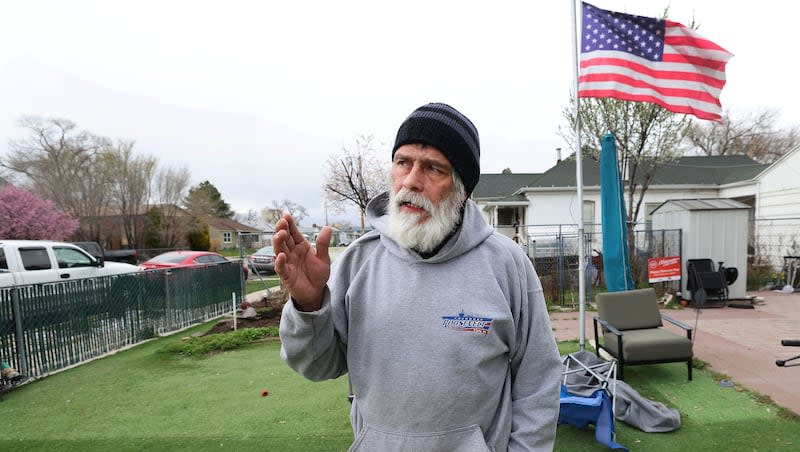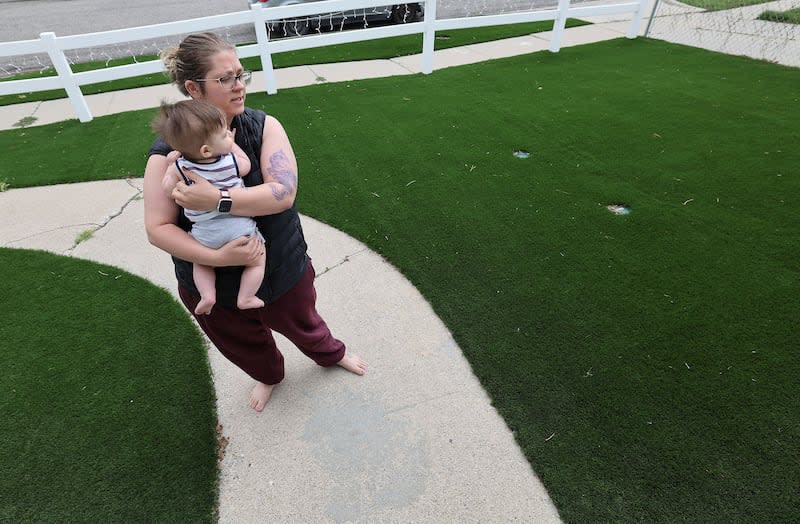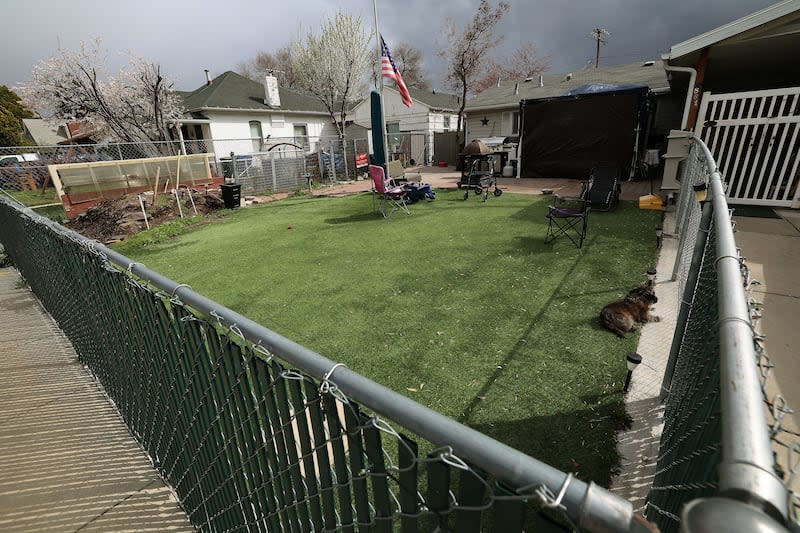Going green with artificial grass? Not so fast

Both Troy Vialpando and Ali Harte are confused.
The state of Utah, water districts and cities have been hounding people for years to conserve water and move to water-wise landscaping.
For reasons of their own — to save water and cut down on weeds — the Salt Lake City residents chose to invest thousands of dollars in artificial turf.
It’s that plastic stuff that is nonpermeable, you do not have to mow and is green all the time. Sounds like a solution to help a state entrenched in water scarcity.
Not so fast.
Vialpando was told by Salt Lake City code enforcement to rip his out or face a tremendous fine. Harte is worried she will face the same fate, but so far, no code enforcement officer has come knocking on her door.
She spent over $10,000 on her fake grass, but said she did not qualify for a rebate for her efforts to save water.
Her neighbor spent thousands of dollars years ago but is being threatened by the city that says it must go. That’s fine, Vialpando said, because he will rip it up and take it to Wyoming, where he plans to move.

Navigating turf wars
If you are going to go water-wise, know that a percentage of your property has to have living vegetation for a rebate. Harte says that is insane in a region consumed by drought.
“The thing is you have to have it be no more than 50% of your yard to qualify. But what’s the point of doing that if you’re trying to save water? I think that’s absolutely ridiculous,” she said. “Why does it matter what the plant coverage is if your are trying to conserve water?”
Harte said as much as she would like to be outside gardening and enjoying the weather, she has health problems. She thought putting in a strip of fake grass would alleviate her challenges. But what will it cost her?
Vialpando had his own reasons. He tried to grow natural turf, but the soil would not take it and it kept dying off. So he spent thousands of dollars years ago and replaced his struggling lawn with artificial turf. He, like his neighbor, has challenges. His wife is a disabled veteran and since COVID-19, he does odd jobs here and there.
The city comes knocking and the state does not know
Harte is just waiting for a fight with Salt Lake City over her artificial grass. She says she is sorry for Vialpando, and there are rumblings of a petition in the neighborhood to make changes to the regulations.
“There needs to be some give and take here. I’ll tell you what, if the city tells me that I need to tear it up, they’re going to pay for it because I don’t have the funds to do that. And I shouldn’t be expected to pay for it. It’s my property. I don’t live in a (homeowners association) for a reason.”

The controversy over ‘being’ fake
As much as people have good intentions, they need to check the rules and be prudent about investment choices.
Michael Sanchez, spokesman with the Utah Division of Water Resources, said the system can be confusing, but there are avenues to help.
He pointed to these resources on the state’s website as a guide for advice.
“For Utahns wanting to check their eligibility and requirements, we urge them to check out UtahWaterSavers.com, specifically our eligibility requirements page.”
It is so convoluted that the only area in Utah currently allowing artificial turf in the state’s Landscape Incentive Program for a potential rebate is Washington County, Sanchez said.
Artificial turf may look nice, needs relatively little upkeep and does not require water like natural grass.
There is a catch, however, explained Laura Briefer, director of Salt Lake City’s Department of Public Utilities.
Artificial turf is made of plastics and does not allow for groundwater recharge. It contains “PFAS” chemicals, forever absorbed into a body — people, fish, wildlife, water.
Vialpando and Harte mentioned California in their complaint about the regulatory stance on fake grass.
There is an ongoing debate over the impact of these chemicals from synthetic grass and California’s struggle with the issue.
Briefer said it is prudent to weigh the risks.
“The concern we have with artificial turf is really in the materials that are used in artificial turf.”
It is not natural and can contain toxins like lead. In addition, it creates a “heat island” boosting temperatures much like pavement, Briefer said.
She added that installing fake grass is not akin to water-wise landscaping because it is basically like installing cement, with no real “breathing room” for the ground.
“There are a lot of benefits to a natural landscape that include groundwater recharge softening (soils) during an intense runoff with large storm events and also filtering contaminants out of the system. And so artificial turf doesn’t contribute to the those kinds of landscape benefits.”
Harte said the city and the state need to get their act together when it comes to water conservation and how companies are allowed to sell it at a huge price that inevitably leaves homeowners in a lurch when it bumps up against regulations.
“It’s asinine,” she said.

